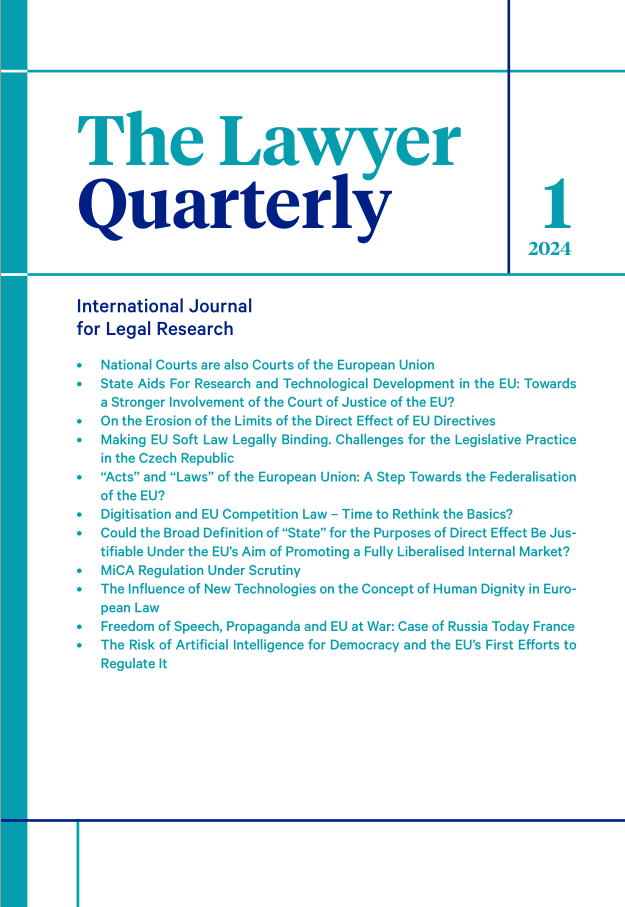ON THE EROSION OF THE LIMITS OF THE DIRECT EFFECT OF EU DIRECTIVES
Main Article Content
Abstract
The article identifies and assesses the different ways in which the Court of Justice of the EU (CJEU)
has eroded its own general limits of the direct effect of EU directives. The article argues that while these
different ways of erosion extend the admissibility of the direct effect of EU directives, they do so at the cost
of significantly weakening legal certainty of the persons concerned, making these erosions highly questionable.
The article highlights and criticises the most questionable form of such erosion, that emanating
from the Mangold and Kücükdeveci line of case law of the CJEU. The article concludes that an adequate
response to these questionable erosions should not be the acceptance of a general admissibility of the horizontal
direct effect of EU directives. Rather, the response should be based on various efforts to reduce the
occurrence of situations of improper transposition of EU directives – the main trigger for the direct effect
of EU directives. These efforts should be accompanied by a comprehensive review of the Mangold and Kücükdeveci
line of case law and a further clarification by the CJEU of the limits of the (in)admissibility of
the direct effect of EU directives, which would considerably increase legal certainty for the persons concerned.
Article Details
Copyright and originality of the offered manuscript
1. It is assumed that the manuscript offered has not been previously published. It is expected that the authors will inform the editorial board of TLQ if the entire manuscript, its parts or some relevant results have been previously published in a different publication at the level of an article in a reviewed scientific magazine or monograph. Should the editorial board of TLQ conclude that this condition was not fulfilled the review process may be terminated.
2. It is assumed that the submitted manuscript is an original academic work. If that is not the case the author needs to provide information regarding all circumstances that could raise doubts whether the manuscript is the outcome of original research.
3. By submitting the manuscript the author acknowledges that after the publication in The Lawyer Quarterly her/his work will be made available online to the Internet users and also kept by the Library of the Academy of Sciences of the Czech Republic. Author's rights to further use the work remain unabridged.

